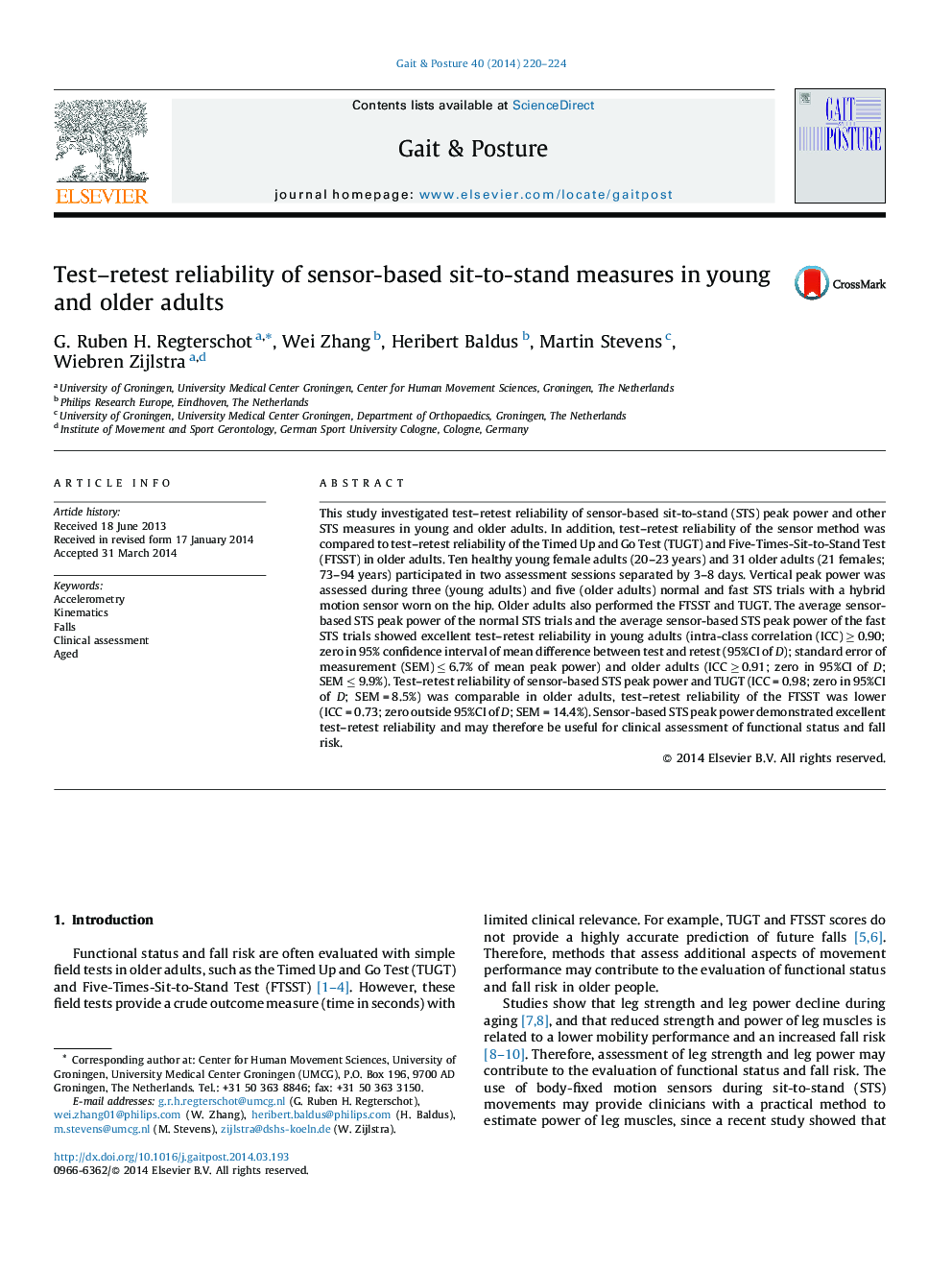| Article ID | Journal | Published Year | Pages | File Type |
|---|---|---|---|---|
| 6206511 | Gait & Posture | 2014 | 5 Pages |
â¢We investigated reliability of sensor-based sit-to-stand peak power in elderly.â¢Sensor-based sit-to-stand peak power shows excellent test-retest reliability.â¢Sensor-based sit-to-stand peak power can be useful for clinical assessments.
This study investigated test-retest reliability of sensor-based sit-to-stand (STS) peak power and other STS measures in young and older adults. In addition, test-retest reliability of the sensor method was compared to test-retest reliability of the Timed Up and Go Test (TUGT) and Five-Times-Sit-to-Stand Test (FTSST) in older adults. Ten healthy young female adults (20-23 years) and 31 older adults (21 females; 73-94 years) participated in two assessment sessions separated by 3-8 days. Vertical peak power was assessed during three (young adults) and five (older adults) normal and fast STS trials with a hybrid motion sensor worn on the hip. Older adults also performed the FTSST and TUGT. The average sensor-based STS peak power of the normal STS trials and the average sensor-based STS peak power of the fast STS trials showed excellent test-retest reliability in young adults (intra-class correlation (ICC) â¥Â 0.90; zero in 95% confidence interval of mean difference between test and retest (95%CI of D); standard error of measurement (SEM) â¤Â 6.7% of mean peak power) and older adults (ICC â¥Â 0.91; zero in 95%CI of D; SEM â¤Â 9.9%). Test-retest reliability of sensor-based STS peak power and TUGT (ICC = 0.98; zero in 95%CI of D; SEM = 8.5%) was comparable in older adults, test-retest reliability of the FTSST was lower (ICC = 0.73; zero outside 95%CI of D; SEM = 14.4%). Sensor-based STS peak power demonstrated excellent test-retest reliability and may therefore be useful for clinical assessment of functional status and fall risk.
